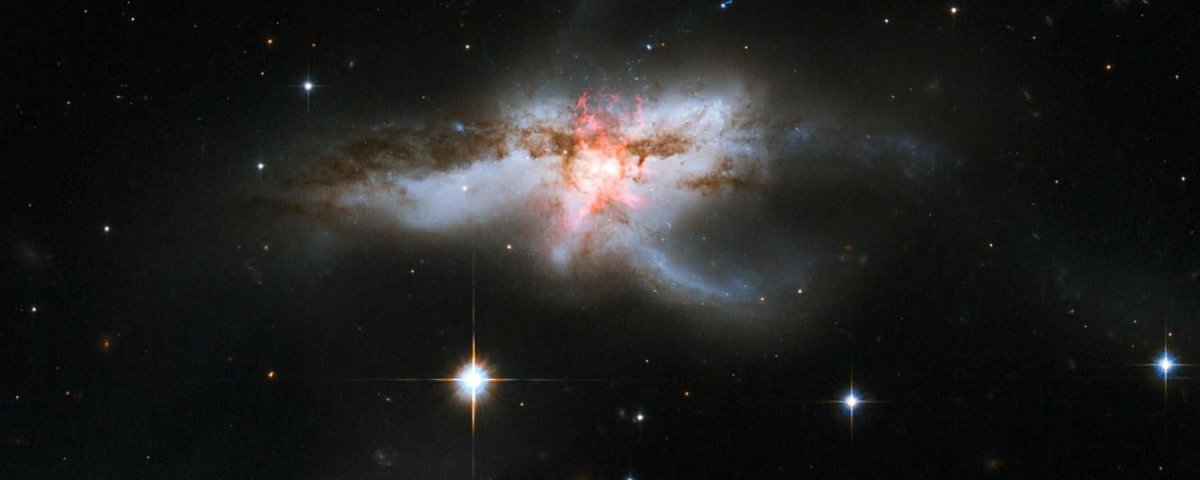Researchers have "dissected" the mysterious gases oozing from two supermassive black holes on the verge of collision in galaxy NGC 6240 for the first time. The huge gas emissions—which flow out like the wings of a butterfly around the black holes—might be switching off star formation in the galaxy.
Powerful wind from the two black holes, researchers reported Wednesday in the journal Nature, wrestles with the wind of fresh stars to create the galaxy's distinctive gas clouds.
"We dissected the butterfly," said study author Francisco Müller-Sánchez of the University of Colorado Boulder in a statement. "This is the first galaxy in which we can see both the wind from the two supermassive black holes and the outflow of low ionization gas from star formation at the same time."

Most galaxies, including our own, have just one supermassive black hole at the center. Scientists think the two circling behemoths are a vestige of NGC 6240's violent history: a rare example of a galaxy formed in the merger of two parent galaxies.
The butterfly structure is really bizarre. Galaxies like our own have relatively neat disk structures, but NGC 6240 smears swaths of gas 30,000 light years into space. The two supermassive black holes—or active galactic nuclei (AGN) in this case—are key to understanding how this mysterious galaxy got its shape. "Galaxies with a single AGN never show such a phenomenal structure," Müller-Sánchez explained.
By analyzing results from three telescopes, the research team discovered two opposing forces have stretched the nebula into its strange shape. The dual black holes are behind one powerful wind while star formation drives another, explained Rebecca Nevin, a graduate student at the university and a co-author on the paper, in the statement. The two winds eject gases totalling about 100 times the mass of the sun from NGC 6240 each year.
Read more: Milky Way: Tens of Thousands of Black Holes Exist at Our Galaxy's Center, Study Suggests
Galaxy mergers kickstart a surge in fresh star formation, Müller-Sánchez said. The incredible amount of gas spewed out by black holes, however, can quell burgeoning star nurseries by blowing away the gases that form young stars.
"NGC 6240 is in a unique phase of its evolution,"added Julia Comerford, an assistant professor at the University of Colorado Boulder and a co-author of the new study. "It is forming stars intensely now, so it needs the extra strong kick of two winds to slow down that star formation and evolve into a less active galaxy."
Uncommon Knowledge
Newsweek is committed to challenging conventional wisdom and finding connections in the search for common ground.
Newsweek is committed to challenging conventional wisdom and finding connections in the search for common ground.
About the writer
Katherine Hignett is a reporter based in London. She currently covers current affairs, health and science. Prior to joining Newsweek ... Read more
To read how Newsweek uses AI as a newsroom tool, Click here.








